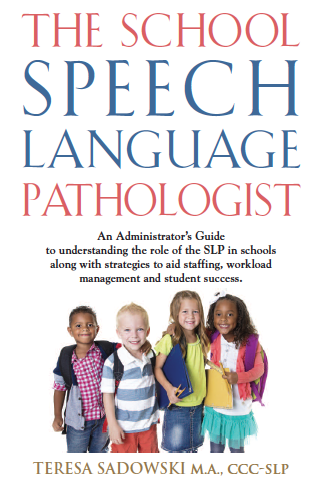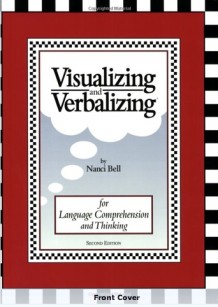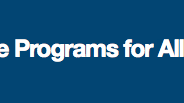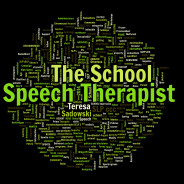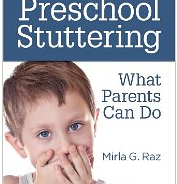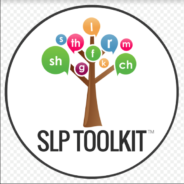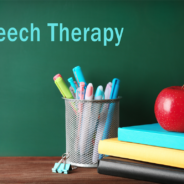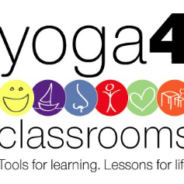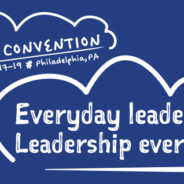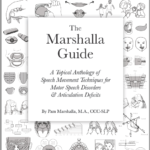My Book “The School SLP”
It’s here!!!
THE SCHOOL SPEECH LANGUAGE PATHOLOGIST is now for sale at all storefronts as an e-book for $4.99:
AMAZON:
http://www.amazon.com/dp/B00Y6YDAZI
BARNES & NOBLE:
http://www.barnesandnoble.com/w/the-school-speech-language-pathologist-teresa-sadowski/1121994087?ean=2940151592819&itm=1&usri=2940151592819
BOOKLOCKER:
http://booklocker.com/books/8038.html
ITUNES:
https://itunes.apple.com/us/book/school-speech-language-pathologist/id998181107
KOBO:
https://store.kobobooks.com/en-US/ebook/the-school-language-pathologist
Visualizing and Verbalizing goals/objectives
Several years ago I took the Visualizing and Verbalizing course. It must have been a 3 or 4-day course. I didn’t take it directly from Lindamood Bell but from a local agency that was approved by Lindamood-Bell and used Visualizing and Verbalizing in their practice. I was honestly very impressed with V and V. My initial impression was that it tapped into a lot of what I was trying to do with many of my students. Basically it presented me with a better-organized and sequential program that fit my needs at the time. At the completion of the course I wrote a reflection paper, which I feel is still relevant today.
Now ironically, the V and V kit along with LIPS (then known as ADD) kit sat on my inherited shelves for years untouched. I seem to remember seeing them collecting dust in various reading specialists offices too. I’m really sorry I didn’t jump on this bandwagon sooner. I also regret not taking the longer LIPS course when I was younger and becoming an expert in it.
I think most of the people taking the course with me were just as excited and anxious to use V and V in their practice. The big question came up. How do we write goals for this? All the controversy around goal writing was just starting to heat up and we needed something substantial. As a group we talked about wording and I’m still searching for those notes. What I did find was the handout given to us by the instructor after our group discussion. Keep in mind that the instructor worked in a clinical setting and that these were generated long before schools started requiring some tie in to curriculum. Also in schools we are not suppose to write goals around a specific program. While V and V isn’t mentioned the first one refers to structure words and the second one mentions felts.
- Student will verbalize the main idea and details of a given picture, word or sentence using 10/12 of the structured words independently and spontaneously.
- Student will read a paragraph, verbalize his images after each sentence or chunk of sentences (2-3 sentences), and give a picture summary with 80% accuracy (4/5 felts)
- Student will state the main idea of a fiction or non-fiction paragraph 8/10 times.
- Student will read a single or multiparagraph selection, verbalize a retell which includes the main idea of a paragraph and his images after each paragraph and dictate a summary of the selections 8/10 times
After rereading these, it’s clear that these are more less an objective for each stage of the program.
Several years later, I still like V and V and use pieces of it. Visualizing as a skill is being taught more frequently in classrooms than it was even 10 years ago. Schools now have reading specialists that hopefully incorporate some visualizing skill development. I tend to use the program to help expand language, increase vocabulary, help to recognize details/background information and improve semantic/pragmatic understanding. I have specific photos on my IPad that I collected over the years and often use the structured words in conjunction. I sometimes take it down to an even lower level using just one or two of the structure words as appropriate.
However, the real question for me is why don’t these very expensive programs come with goal suggestions that can be used in schools? Why don’t we leave conferences with specific goal language in hand? So often we leave conferences with a lot of background information (sometimes a lot of review) and very little in terms of specifics around implementation. I feel the same way about formal tests; there is so little discussion on test interpretation and what to do about it. I get that we are suppose to use our clinical judgment but a little guidance and a few more examples would be nice. I guess that’s a discussion for another day.
Hey if you haven’t tried V and V it’s worth taking the course. As an SLP I’ve never had a chance to use the full kit. However, I would love to be involved with a school or clinic that uses the program on a regular basis.
Trust Risk Management Services for SLP Liability Insurance
I just want to say thank you to Trust Risk Management Services for your continued support of my blog The School Speech Therapist the past 3 years. Trust Risk Management Services provides liability insurance for SLPs with comprehensive coverage and reasonable rates. I hope if you are a practicing SLP you already carry some type of liability insurance. However, if you don’t have insurance please take a look at the policies offered by TRMS. If you have insurance, next time your policy is up for renewal I hope you will take the time to compare your policy to what TRMS offers.
My own personal feeling is that personal professional liability insurance is a must. Protection offered by schools, hospitals and agencies is usually there to protect their interests not necessarily yours. https://theschoolspeechtherapist.com/wp-admin/post.php?post=1394&action=edit

I’m back and want your input on SLPs in schools
Well it has been awhile since I seriously worked on my blog. In December I left my school position to start a private practice. In July I made it official forming my own LLC called TBS Speech Therapy. I did a little contracting work earlier this year and have firmed up my first consulting gig for the fall. My school year ended without the usual drama and the amount of time I spent on paperwork was significantly less and compensated. Right now work life is good.
If you follow my blog you know I’ve done a little bit of work on advocacy for SLPs in schools. Writing my book, The School Speech Therapist: An administrators guide to understanding the role of the SLP in schools along with strategies to aid staffing, workload management and student success, presenting at ASHA 2016 and writing articles on my blog, has drawn only a little bit of attention but a lot of support from SLPs finding themselves in similar situations. Frankly, I had to give it a rest for a while when I realized that despite my best efforts I was not able to advocate for myself and get results. I was feeling very much like I was hitting my head against a brick wall while burning out at the same time.
I reached out to ASHA years ago on the topic of advocacy in schools and didn’t get much of a response. At the time all I saw were articles on caseload management. Honestly, I was a pro at caseload management. I mentioned my concerns to SIG 16 at ASHA 2017 and even that went nowhere. However, ASHA 2016 was the turning point for me. The motivational speaker who presented at the opening get together inspired me to make a change.
Now after a nice long hiatus and a fun/relaxing summer, I’m feeling productive again. I want to write and article on why SLPs leave school based positions (and also maybe why they don’t leave). I would love any and all input. I’m pretty sure I know what I’m going to hear but I want to see if there is a pattern.
You can tell me your thoughts here, PM or respond on my facebook page, The School Speech Therapist or send an email to theschoolspeechtherapist@gmail.com All is confidential. Thanks Teresa
SLPs, Contribute to your school newsletter
In my state, teachers and all professional staff have to generate personal SMART goals. With all the work SLPs do, the last thing I wanted to do was have to keep complicated data on something I was doing. At that point I decided to do something very easy for me that would benefit all students not just those with language issues. My SMART goal was to write monthly articles focusing on language development.
Initially, I found it wasn’t that easy to find universal themes that could be beneficial to all. However, knowing all we know about language and learning once I had a topic writing for parents was easy. I created articles about once or twice a month for that school year. The idea was well received by my principal. Basically it was free content for the school newsletter. Best of all if I published one article a month (sometimes weekly) I achieved my goal without extensive data collection.
I’ve slowly made these articles available to other SLPs on Teachers Pay Teachers. Here is my current list of articles available on TPT. These articles are written in a word document so they can be edited to fit the needs of you specific setting.
The School Newsletter: Practice Those Memory Skills-free
The School Newsletter: 10 tips to building a strong vocabulary (5 article series)
The School Newsletter: Don’t Drop Picture Books Too Soon
The School Newsletter: Don’t Forget The Details
The School Newsletter: Strengthen Language Skills Through Conversation
My section of the school newsletter was titled “Notes from the School Speech Therapist.” If I were to introduce this at another school I would probably change that title.
The articles are available in my TPT store. This was such an easy way to achieve my Smart goal. I received some very nice complements from my staff and administrators. It also made my presence in the building more obvious, helped to encourage language and learning beyond the school day and hopefully made parents more aware of what they could do to support their child’s development. I believe the articles were also a universal support that helped with general language development. Better Speech and hearing should be highlighted all year around not just in May.
Let me know what you think. I do have other articles to post so please check back often. If you have ideas for articles I would love to hear them.
Teresa
Stopping the Stuttering Trajectory in the Preschool Years
The School Speech Therapist would like to welcome guest blogger Mirla G. Raz. I first became acquainted with Ms. Raz when I was asked to review her most recent publication Preschool Stuttering: What Parents Can Do. I was duly impressed with the book (you can read my review here). As it turned out I was already very familiar with Ms. Raz’s work since I had been using her books from her Help Me Talk Right series for years. The Help Me Talk Right Books continue to be a staple in my therapy room.
Ms. Raz has shared an excerpt taken from her newly developed course Stopping the Stuttering Trajectory in the Preschool Years available through Northern Speech Services. The course is designed to teach SLPs how they can help parents navigate the emotional and often confusing landscape of stuttering. Given that Ms. Raz’s book was so helpful to me, I believe her course will significantly add to your body of knowledge. Teresa
From Stopping the Stuttering Trajectory in the Preschool Years By Mirla G. Raz
Stuttering during the preschool years can be an easy problem to solve, one that may stop the child’s stutter before therapy is ever needed. We can do this by helping parents understand the disorder and advising them how best to communicate with their preschooler.
When parents hear their child stutter, their first inclination is often to intervene without professional input. They believe that what they do will help their child stop stuttering. They may not realize that their actions can be counterproductive. We can help parents by asking them to avoid specific interactions. We can help them by offering replacement interactions.
Below I have listed the interactions to be avoided:
- Speaking for the child.
- Finishing words or sentences for the child.
- Interrupting the child when he is speaking.
- Facial or body language that shows the child the parent is anxious or upset about the child’s speech.
- Asking the child to perform or recite in front of others.
- Talking about the child’s speech when others are present.
- Getting upset or distressed when the child stutters.
- Calling the child a “stutterer.”
- Limiting the amount of time the child has to speak or indicating that the parent is in a rush and does not have the time to listen.
- Bombarding the child with questions.
- Poking fun of the child’s speech or teasing him about it.
Parent can replace unhelpful interactions with the following:
- The parent should get down to eye level with the child and make eye contact.
- The parent should listen to what the child is saying.
- The parent should not interrupt the child or try to help him as he stutters.
- When the child is done talking the parent should comment on what the child has said, not how he has said it.
Mirla G. Raz has been working as an SLP for over 40 years. She is the author of the popular Help Me Talk Right books. Her most recent publication, Preschool Stuttering: What Parents Can Do is a comprehensive book designed to help parents understand stuttering during the preschool years. The book explains what happens when a child stutters, stuttering facts, the role of emotions and temperament in stuttering, the emotions and roles of the parents, what can cause the stutter to be better or worse, the impact of the child’s environment, when and where to seek professional help and more. The books are available through her website www.helpmetalkright.com and Amazon (see links below).
Progress Monitoring Made Easy with SLP Toolkit
The School Speech Therapist would like to welcome guest bloggers Lisa Kathman, M.S. CCC-SLP & Sarah Bevier, M.S. CCC-SLP. I met Lisa and Sarah at the 2016 ASHA convention. Sarah gave me a quick demonstration of their product, SLP Toolkit and every aspect of it made sense. My initial impression was that it really could help school based SLPs. The following day I attended their formal presentation and continued to be impressed. For school SLPs the biggest drag is the copious amount of paperwork and vast amount of data we are suppose to collect. SLP Tool Kit has programs set up to take care of everything from goal writing to progress reports. They’ve set up ways to keep/measure data and have it organized for progress report writing. I’ve seen many a program over the years that is suppose to help with one thing or another but none with the universal potential of SLP Toolkit. I want every school based SLP to know about SLP Toolkit. Please take the time to check out this web based product. If you like it, don’t wait for your school to approve it. Sign up for a free trial or just get it for yourself. It might just make your life significantly easier. Teresa
Why does every school-based SLP dread the end of the grading period? It may have something to do with the 60 or so progress reports that go along with it (and the fact that you usually have to complete them over your vacation).
If you look at your current caseload, chances are that most of your goals are written in a format that uses SLP data as the criteria for measurement. So progress reports involve you pulling out your speech files, pouring through the session notes, doing some math, and hoping you have what you need to fill in the progress section on your report…because if not, you will be doing some last minute scrambling to collect data points or even worse, making “smart guesses” on progress.
The issue is not whether we collect data. We are speech-language pathologists! We not only are trained to take data and are good at it, but it is in our nature to love data. The problem is the the fact that the data we collect doesn’t necessarily align to how a goal is written. Let me explain further. The whole point of taking data in speech therapy is to make ongoing treatment decisions (e.g. What cues/intervention strategies worked best? What isn’t working? Is change occurring? What direction do I want to go in next time?) This is usually different data than what we need for a progress report, which is the performance on a skill in percentage format that you want a student to achieve within a year.
This is especially true for new IEPs when you may be working on underpinnings for the skill or related skills, but not the skill exactly as it is written in the IEP. Even when you think you are taking black and white data, for example for a skill like naming synonyms, there can be a wide variation in scores you record in your notes if there is no consideration in selection of stimulus items during therapy. For example, if one week you’re asking the student to name a synonym for the word “big” and the next week you’re asking for a synonym for the word “artificial”, scores look very different. No wonder panic and meltdowns happen at the time of writing progress reports.
This is where criterion referenced tests (CRTs) and rubrics can come to the rescue! CRTs measure a student’s performance against a predetermined criteria. Teachers frequently use CRTs to evaluate whether students have learned a skill or have met the expected academic standards. This form of measurement is also an excellent way for SLPs to collect baseline data on communication skills and then retest the student’s performance using the same criteria each quarter to monitor progress. The consistency of using the same CRT to retest improves accuracy of the data. The same set of stimulus items is used each grading period to determine progress on the skill.
As with any other assessment, it is important not to teach the items on the criterion referenced test. In treatment you are working on the strategies a student needs to acquire that skill in various contexts and then use the CRT at the end of the grading period to determine if those skills can be applied to the test.
Another effective way to measure progress on IEP goals is to use a rubric. Rubrics list a set criteria for mastery that include both quantitative and qualitative data in a way that makes sense to teachers and parents. They can include objective performance data on the skill, level of cueing needed, setting skill is used among other things, making it a more authentic measurement of the skill, with points assigned for each level of performance. Rubrics are particularly helpful for breaking down and assessing the complex nature of social skills, which can be complex and subjective. However, they are not limited to this communication area.
When using a rubric, it is important to attach the rubric to the student’s IEP so it is clear how the goal is being measured. Otherwise parents/teachers/unfamiliar readers may interpret a rubric score of 14/15 as a ratio rather than a total number of points to achieve.
If you would like to see some examples of CRTs and rubrics, SLP Toolkit has created a large bank with hundreds of speech/language CRTs and rubrics for a variety of communication skills. Sign up for a free trial at www.slptoolkit.com to access all content within the app for up to five students, including the progress monitoring tools.
For more information on criterion referenced tests and rubrics, check out our video tutorials on our Vimeo channel.
A little about Lisa and Sarah: Both hold master’s degrees in communication disorders from Arizona State University. Lisa has been an SLP for 20 years and is the lead SLP for Mesa Public Schools. She has presented on multiple topics in a variety of communication areas to general/special education teachers, directors, and students. Sarah has been in the field of speech pathology as an SLPA, speech technician and SLP for 10 years. Sarah has experience providing training to SLPs, school staff and university students on therapy topics and assessment.
Speech and Language Service Delivery, Be Proactive Parents
This article was originally published by Teresa Sadowski M.A., CCC-SLP on the now defunct Examiner web site in February 2012. Speech and Language Service Delivery, Be Proactive Parents was written to help parents advocate for appropriate and effective speech and language services for their child.
Once your child has been diagnosed with a language disorder or weakness, it’s important to be proactive about service delivery. Asking, “How often will my child be seen by the Speech Language Pathologist?” isn’t enough.
The service delivery process begins with the Speech Language Pathologist (SLP) making their recommendation at the team meeting based on testing, progress and your child’s specific needs. Unfortunately, recommendations may also be driven by the school’s schedule, the therapist’s caseload or the school’s philosophy. A typical recommendation might be 1-2 thirty minutes sessions a week using either the “pull out” or “push in” model.
In the “pull out” model, your child receives services in a separate small group**** or individual setting. They’ll receive specific instruction and practice in their area(s) of need. School schedules might not be conducive to this model. Sometimes it’s difficult to find half hour blocks where the student isn’t missing something important. Ask the team to explain the schedule to you. Ask when services will take place and what your child will be missing. Some schools have scheduled in a daily block of time that accommodates children who receive special services. During that block of time the other students are free reading, taking an extra elective or working on special projects. This not only helps with scheduling, it keeps the special need student from feeling singled out or from falling behind. If your school has not developed this block of time ask the administration to consider it.
Many schools are opting for the “push in” model which means the therapist goes into the classroom. If the “push in” model is recommended there’s a lot more to ask.
How many other students is the therapist servicing at the same time in the classroom? Any more than 3 or 4 students and you might begin to wonder if the therapist will have any significant contact with your child. How will the therapist address my child’s specific needs? If you are not satisfied with the response to this question, continue questioning using the proposed goals and objectives as a guide. How much consultation do the therapist and teacher have before and after the lesson? If consult time between SLP and teacher isn’t built in, “push in” will not be very effective. One of the main purposes of the “push in” model is to educate teachers on the language disability and how to implement classroom lesson plans that accommodate a student’s specific needs. Therapists may often recommend a combination of push in and pull out as an appropriate solution.
How big is the therapist’s caseload?. In some school systems SLPs are servicing 80+ students. Even a therapist with 30-40+ students is going to have little time to devote to your child. Trained Speech Therapy Assistants are frequently used in schools with large numbers. Just like therapists, some therapy assistants are good and some have limited skills. If a therapy assistant is involved in your child’s programming you need to ask three questions. How much experience does the therapy assistant have? Everyone has to start somewhere but if you have a child with specific and challenging language needs that require flexibility in programing, insist the SLP primarily works with your child. What kind of training does the therapy assistant have? Therapy assistants should either hold a certificate from an accredited program or have undergraduate degree in speech language pathology. How often does the assistant meet and consult with the SLP? In reality they should meet daily to discuss mutual caseloads, that doesn’t always happen. In some states the SLP must be in the building available to observe and supervise the assistant at all times. If you are uncomfortable with the response you receive to this question, ask to see the state regulations.
Most schools really do look out for the best interest of their students. And most therapists will answer programming questions with relative ease during the team meeting. However, it is easy for schools and therapists to become overwhelmed or find themselves struggling with limited resources. Develop a good working relationship with your child’s special educational team, check in with their service providers every so often and ask what you can do to help. In the end, your proactive actions will only benefit one person……..your child.
Adopting a growth mindset
Today The School Speech Therapist wants to introduce guest blogger Rochel Lieberman MA CCC-SLP who has recently written a children’s book called Pearla and her Unpredictably Perfect Day: A story about how a sprinkling of mistakes can be a recipe for success. Perla is written for children aged 4-12, particularly those who experience anxiety or developmental issues. It demonstrates that you can’t succeed unless you try and that it’s ok to make mistakes. Pearla’s strategies for solving her problems will help children to overcome their own hurdles. Read more about Pearla and the motivation behind this book below. Please consider sharing this book with the children in your life. Teresa
There is a charity bake sale at school. Sara, juggling two jobs while raising her three children does not have the time nor energy to bake a cake for the sale. She thought about putting in the effort, but her previous baking attempts have not been successful. On her way home from work, she picks up a tray of large round cookies at the supermarket. She meets Lisa, her close friend, and they begin with the “mom talk”. Lisa relays that she does not enjoy baking, will probably stay up late to bake a cake anyway, and wonders aloud why she is struggling with herself for this endeavor.
I believe that there are multiple sources for the intense pressure for perfection that is found in both children and adults. Thankfully, there are a great many ways to combat that pressure. While genetics, family of origin, and innate personality can lay the foundation for pressure, there is also a mindset that plays a significant role in how one views perfection.
Growth vs. Fixed Mindset:
Dr. Carol Dweck, a world leading researcher on motivation and success from Stanford University, studied why some people succeed and others do not. What she uncovered was that there are some people who believe in a fixed mindset, that basic traits and talents which you were born or endowed with, like intelligence, are fixed. Others, she found, believe in a growth mindset, where success is attributed to hard work and effort. Individuals with a fixed mindset usually only choose items and activities that they know they’re good at. Individuals with a growth mindset welcome mistakes and accept that it they are part of the path to success, thus increasing their successful opportunities.
In Pearla and Her Unpredictably Perfect Day, Pearla embarks on a journey that begins with a fixed belief that mistakes are “just not okay in Pearla’s perfect world”. In this story we meet other characters who share similar limiting beliefs; we meet Mrs. PeggyOpal and daughter Darla who come from the other side of the river wearing matching sundresses. They travel with a tester, a person to taste each confection before they eat it. Darla and her mother, are horrified to see the mistake cupcakes, and say, “I only eat tall cupcakes with perfect wiggly white cream”. As is typical of those with a fixed mindset, the PeggyOpals leave the store without any cupcakes to take home. While they are stuck in their fixed mindset of success, even proudly displaying their peg-board status on their license plate (“Pego”), Pearla begins to question her beliefs and thinks of a promising plan to deal with her mistake. In doing this, she develops a growth mindset. At the end of the entertaining tale, she learns an important lesson that she will never forget: “Sometimes things don’t go perfectly. By staying calm, we might see that imperfect changes can turn into perfectly perfect plans!”
While the reader can feel empathy for the PeggyOpals, it is important to understand that anyone can adopt a growth mindset. At the end of the story, the PeggyOpals reconsider if they should try the imperfect confections! They can be seen standing outside the bakery with their taster. Although we do not know if they will indeed enter the bakery, this a big step in developing their growth mindset. Individuals with a growth mindset understand that challenges will arise and problem solving will be required. Take one second and ask yourself ask “in what area of my life do I have a fixed mindset?”
To read more about Rochel and to purchase Pearla and Her Unpredictably Perfect Day visit www.ariberspeech.com
Workshop: Yoga and Mindfulness in the Classroom
Back in mid-December I attended a one day workshop called “Yoga and Mindfulness in the Classroom: Tools to improve self-regulation, learning and classroom climate” Lisa Flynn, E-RYT, RCYT presented a program that she designed to help bring yoga and mindfulness into the classroom. Not only did she present the concrete parts of the program, Ms. Flynn also did a good job explaining how students could benefit both academically and behaviorally.
My motivation for attending was to learn a little bit about mindfulness and incorporate some quick and simple techniques into my therapy sessions. I was actually planning for that to be my smart goal for the year. The initial sequence presented focused on activities that could easily fall under the SLPs scope of practice. One listening activity focused on auditory attention, some breathing and head/neck movements could fall under oral motor, movements that pair up with others could fall under social and another activity focusing on relaxation/imagination is basically visual imagery. I’m sure I could find many more examples.
Ms. Flynn has modified many of the basic yoga positions to be “school friendly.” This means nothing too challenging, minimal space requirements and no touching the floor. Even more impressive is that she has put together a variety of sequences to choose from depending on needs. Ms. Flynn was also very mindful of the time constraints schools face, creating sequences that vary from 1-2 minutes to 20 minutes. Her suggested sequences include
- Morning meeting
- Take a Break
- Transitions
- Pre-Writing and Writing Break
- Pre-Test and Test Break
- Calm/Focus
- Mood/Energy Shift
- Close of Day
Several of these 1-2 minute sequences would be perfect for speech/language therapy sessions.
Yoga and Mindfulness in the Classroom was hosted by PESI. It really was a good bang for the buck. Not only was Ms. Flynn very knowledgeable but she also shared an awful lot of information and the take homes were very complete. If you wanted to implement her techniques on a larger scale there were materials available to purchase. Ms. Flynn has created sets of cards to guide, explain and demonstrate the aspects of her program and I must say they were quite good.
If it would up to me, I spend some consult dollars on this program to have Ms. Flynn train the teachers and develop a program that would fit my schools needs. I see this approach as proactive and being able to help in so many ways. I could also envision physical education teachers taking the lead on this to help incorporate this into daily practice. This is a program all kids could benefit from. This could be considered a universal support in schools and foster skill development in so many areas.
This was honestly one of the most enjoyable workshops I’ve been to in a long time. I do have to wonder if it was enjoyable because we got to get up and move around. If movement and breathing made the workshop more enjoyable that just proves it works. I’m looking forward to incorporating many of these techniques into my therapy sessions.
Read more about Lisa Flynn’s Yoga 4 Classrooms program on her web site
Final thoughts on my ASHA convention experience
Well it’s been over a month since I attended the ASHA Convention in Philly. I’ve been wanting to follow up my ASHA Convention Experience article series with a summary of my experience and thoughts on the whole thing. Overall my whole ASHA Convention experience gets a flexible B to B-.
The Sessions
There were two main reasons in my mind to go to ASHA. One was the amazing amount information I expected to be exposed to. ASHA gets a solid A for the quality of speakers. With 15,000 in attendance, ASHA presented a nice variety of sessions in terms of topics and length. There were always several sessions I wanted to attend that fell at the same time. Overflow was handled well when sessions were extremely popular.
My Poster Session
The second main reason to attend the ASHA convention was to present my poster (based on my book) on Educating School Administrators about the Speech Language Pathologist’s scope of practice and role in schools. Unfortunately, I presented my poster on Saturday the last day and last session. There were several people who had made it a point to come and talk to me and that was great. I couldn’t even linger afterward to talk with the few still milling about because the venue kicked us out. I also think at that point people were on “information overload” and either left the conference or were more interested in vendor deals. I did end up giving away a few of my books. Yes I am a soft touch. I also had a great rack card handout to give to principals and administrators. I was surprised more were not taken. However, when people took the time to read the rack card info they often came back for more or sent their friends over to get one.
Information Overload
I like to talk speech language pathology as much as the next guy but three full days is almost too much of an overload. I know by Saturday I was ready to ditch the sessions I planned to attend. I forced myself to go since I had paid for the conference. I was glad I did.
The Mira App
I did like using the Mira app. I think it helped to organize my time to help me get the maximum ceus possible. Organizing for this convention was overwhelming because so many sessions were offered. Not only did I prepare before I went but I firmed up my schedule the night before. I used my IPad to reference the uploaded conference materials during sessions and that helped with note taking. I ended up with 17.5 CEUs and that was with very little down time. If you plan on using your IPad at any convention make sure you have an external charger handy those batteries drain quickly.
Connections
I found that ASHA can be a very lonely place when you go alone. Honestly, I keep myself busy so that really doesn’t bother me. However, it would have been nice to have some formal opportunities to really discuss topics with other SLPs rather than just listening to lectures. Of course I would chitchat with people sitting next to me or sharing a table at breakfast but it was just surface conversation. I wish ASHA would offer roundtable discussions where you could meet and discuss current topics/concerns/share ideas/possible initiate change. I’m also at the point in my career where a few more opportunities to network and collaborate would be nice. (Sorry SLPs I have to say this…we’re still a very clicky crowd.)
The Keynote Speaker
I have to give a shout out to the keynote speaker, Drew Dudley, he was excellent. I usually don’t go in for the rah-rah of opening ceremonies but I am glad I went. He actually inspired me to make a key decision regarding my career.
The Vendors
The biggies were there such as Pearson and Super Duper. Apparently it is a tradition for many to leave with their yearly Super Duper bag that they give-a-way. I will admit it is a nice bag. There were lots of raffles so I hope someone won something. Tag scanning makes entering a lot easier. A few of the bigger ones were giving away like one copy of one test-such Princes. Too many staffing agencies were there trying to get you to sign up with them (that will be an article for another time). There were also several vendors hawking TENS units. Those small vibrators that are suppose to help pain. I have to wonder if SLP have a higher percentage of pain compared to other fields because of all the bags we carry. And yes there was a bag lady there. At least she was an SLP. There were not as many tchotchkes to pick up as there were 30 years ago. I didn’t buy anything but I did see a few things that would work for me in therapy. Some of the vendors were offering conference discounts. I noticed the private practice folks loading up on discounted materials.
I did meet the ladies who have created SLP Toolkit and they have one heck of a product that I want to try.
The Cost
When all was said and done I spent around 1,500 to go to ASHA. I got the early bird ASHA conference fee (no discount for presenters which I think is wrong). Airfare was reasonable. Now I stayed at the Marriott to be at the venue so that added significantly to the cost. Sharing was not something I would have ever considered, even in my younger days. Let’s think about this ladies….do you think men go to conferences and ask, “Who will I room with?” I doubt the men of ASHA were sharing hotel rooms. Why would that even be something to consider, we are adult professionals. Poster costs were minimal but the hours involved in prep were not. (Poster presenters do not even get credit for the time they stand at their poster presenting-it isn’t a great deal CEU wise) However, presenting is voluntary and if you aren’t willing to put in the time you don’t have to do it. It is obvious they have no difficulty getting quality presenters with the current system. I doubt other fields give away their information like that.
Dining
The food situation at this particular conference was terrible. The venue did not have enough staff on to even sell coffee in the morning. Long lines were everywhere and so many food stands were not even opened. There was very little time between sessions to get something to eat. A half hour was not going to be enough given the food situation. The hotel restaurants had incredible waits (due to poor staffing from what I could see). Even lines at the giant food court across the street were huge. I ended up eating hot dogs off a food truck for two lunches. I might consider the box lunch option if there is a next time. Luckily, I participate in the Marriott rewards program so I had breakfast and enough of a snack around dinner to call it a meal. Now I did have a lovely dinner one night with an old friend and her husband. We picked a great spot and got to see a little bit of the city.
The City
It would have been nice to have some time built in to see the city or take a tour. I know other professional conferences offer that. ASHA is all business. SLPs just don’t have the luxury of taking time off from learning.
Final Thoughts
I am glad that I went but I can’t say I enjoyed the experience. I think I just went in with expectations that were too high. The funny thing about that is that after 30 years of continuing education, I know better. The content presented in the sessions I attended was better than average. Very rarely do you actually get practical information out of any conference you attend. I would say that I took away good ideas from around 50-75% of the sessions I attended. Which I think is pretty good.
I think it was more the social aspects of ASHA that didn’t meet my expectations. I was hoping for more opportunities to talk shop with other SLPs, find out what others are doing and share some thoughts. It’s almost like ASHA and SLPs need a pragmatic goal or expectation. We are so isolated in our work that I though perhaps at the ASHA convention I might get to meet and discuss issues with like minded SLPs. Unless I decide to present again I won’t go to another ASHA till it comes back to Boston. I’ll spend my continuing education budget on smaller conferences. But who knows, I’m thinking about submitting to present at the Schools Connect, Health Care Connect, and Private Practice Connect in New Orleans in July. The only turn off there is New Orleans in July. I’m still not giving up my mission of advocating for SLPs and speech/language students through increased education for school administrators.


